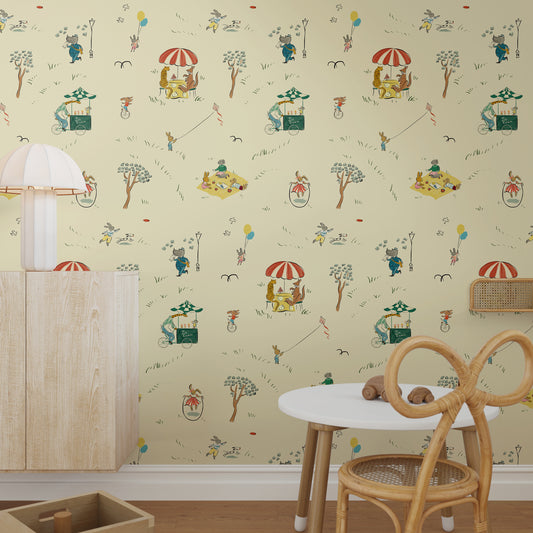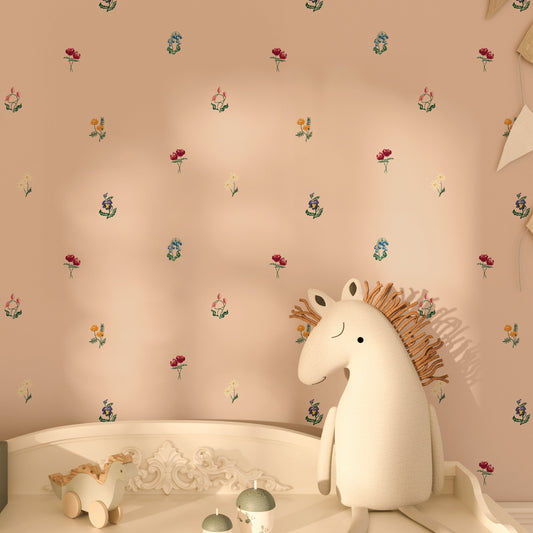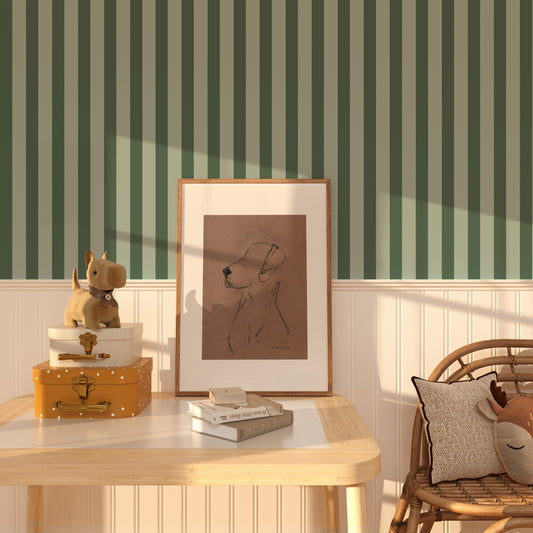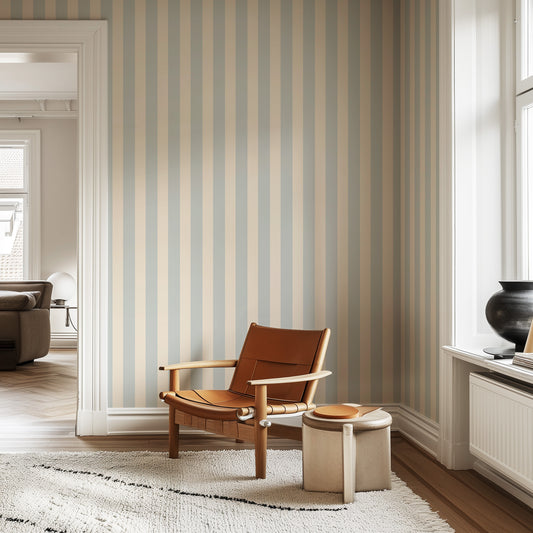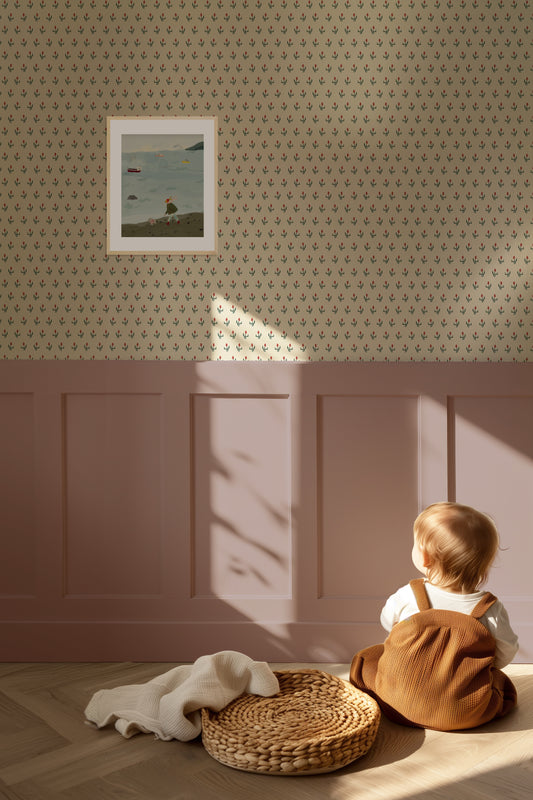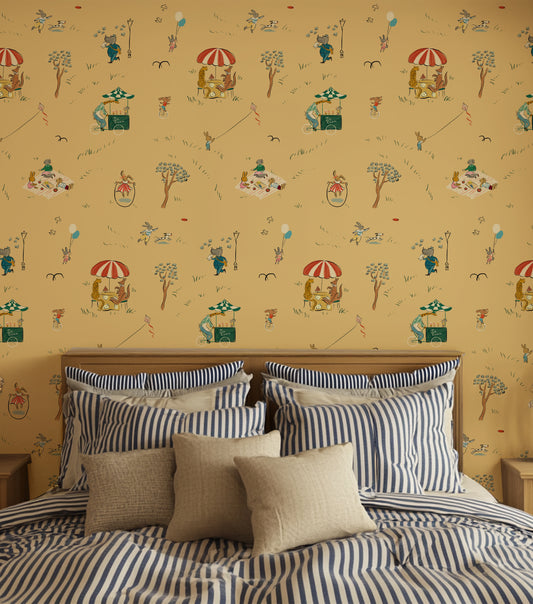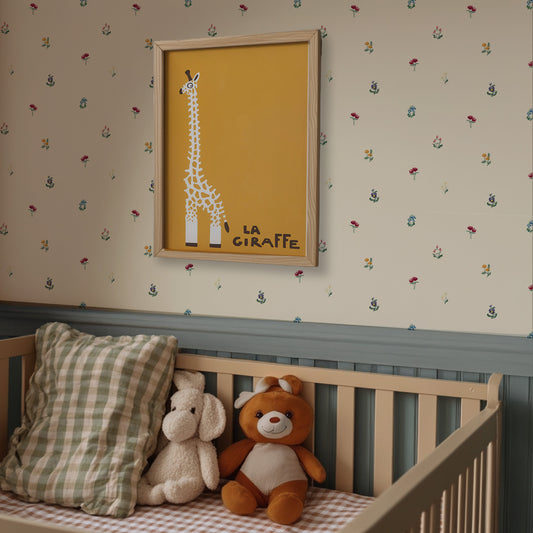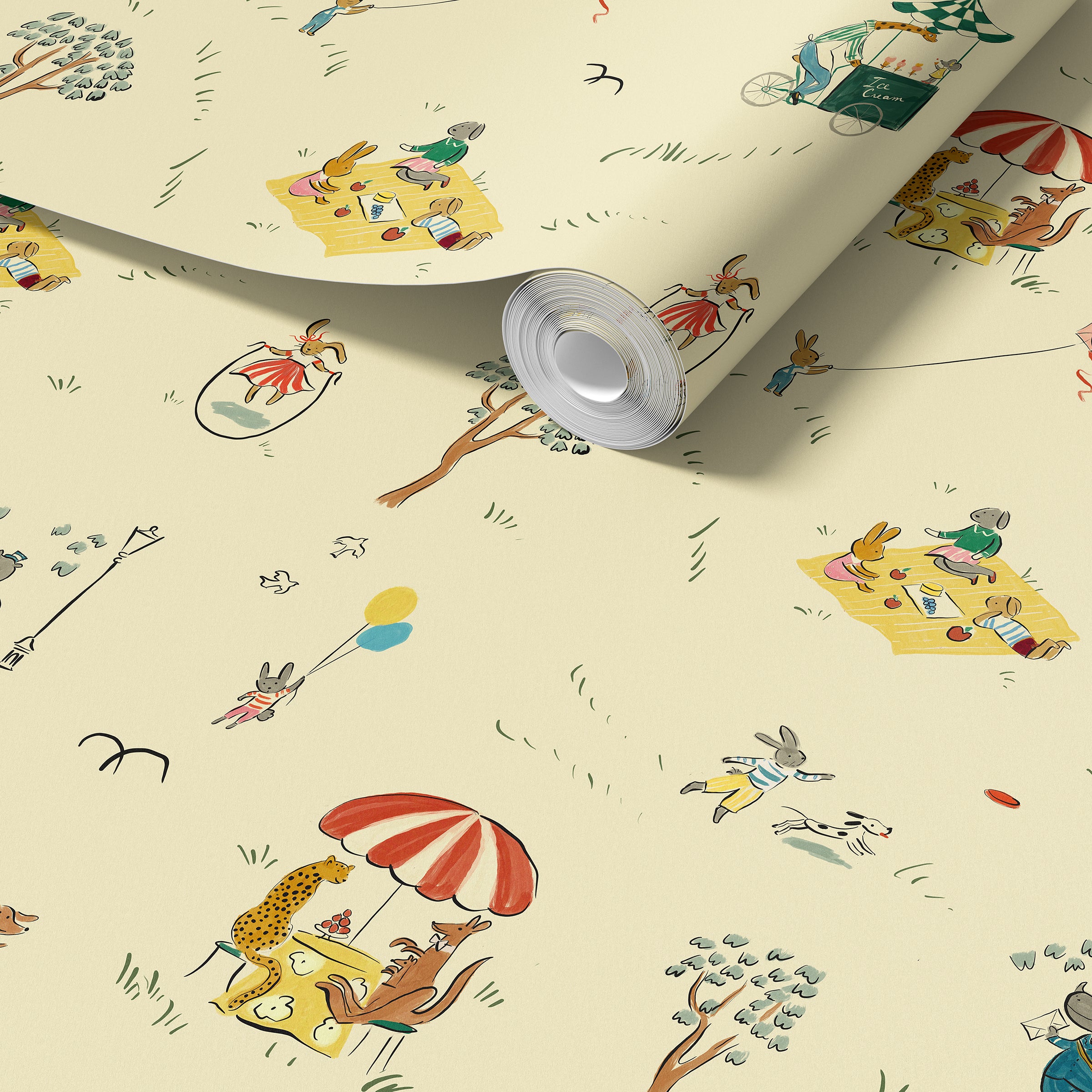
TRADITIONAL WALLPAPER INSTALLATION
Our traditional wallpaper is paste-the-wall, installed edge to edge. This is classic, durable wallpaper that is great for longterm use on most wall types. Most customers choose to have traditional wallpaper hung by a professional installer. If you choose to hang the wallpaper on your own, please follow the steps below.
HOW TO INSTALL TRADITIONAL WALLPAPER
Before you begin
Tools you'll need:
- Wallpaper paste
- Paintbrush or roller for paste application
- Slightly moist sponge for removal of paste from wallpaper edges
- Level and a pencil
- Step stool or step ladder
- Straight edge or ruler
- Sharp blade or utility knife
Installation is best done together with someone - it's easier and more fun that way!
After receiving the wallpaper, take it out from the original packaging and unroll the panels. It must remain in this state for at least 48 hours.
Take a final look to make sure the walls are smooth. Textured walls will make it more difficult for the wallpaper to adhere.
Do not apply if your walls have: unpainted drywall, cracking paint, humidity spots, knockdown, orange peel, or popcorn texture. If any of these describe your walls, please make sure to fill holes and sand bumps so the wall is smooth. We do not recommend applying on glossy walls (only matte / semi-matte) or on top of already applied wallpapers.
Freshly painted and primed walls must dry for 7 days before installing the wallpaper.
Step 1
Prep your walls
First, remove your outlet covers, light switches, register covers, etc.
Next, use a wet cloth or sponge to clean the surface with warm water and mild soap. Don't use strong chemical cleaning products or the wallpaper may not stick well to the wall. Let the walls dry for 24 hours.
Surfaces not recommended for installation: Highly textured walls, multicolored walls, on top of already wallpapered walls, brick/cinderblock, unpainted drywall/sheetrock, on cracking paint, humidity spots, orange peel, popcorn texture, or outdoor areas.
Step 2
Map it out
Unroll your wallpaper panels and lay them flat. Allowing the panels to uncurl over a 48 hour period. During this time the wallpaper will adapt to new environmental and climatic conditions.
Identify where your panels will be placed within the room. Make sure you have enough wallpaper to cover your area. If you have a mural type wallpaper, numbers on the sheets will form a sequence for placement.
Step 3
Apply the wallpaper
1. Before applying, use a level and a straight edge to draw a straight vertical line on the wall where you want to start application.
2. Using a paintbrush or roller, stain the wall with the glue.
3. Remember to stick the edge of the first sheet exactly to your drawn line. Every next sheet will depend on the accuracy of the first one.
4. Attach the wallpaper to the wall. Straighten out any air bubbles from the center of the wallpaper to the edges.
5. Hang the second panel to the right of the first panel. Make sure the artwork aligns from the top of the wall downwards. The wallpaper panels should be hung edge to edge without any overlapping. Gently and evenly press the panels together to ensure no visible seams.
6. Each time after attaching a new sheet, use a sponge to clean up any glue that spills on the edges of the wallpaper.
7. Repeat these steps until you are finished!
Step 4
Trim the excess
Once you’ve applied all strips, use your straight edge and a sharp blade to trim excess wallpaper on the top and bottom of your wall, around windows and doorframes. Do not use dull scissors or blades. Make precise cuts to achieve clean edges.
Enjoy your new room!

Best Sellers
-
Parks Wallpaper, Cream
5.0 / 5.0
(3) 3 total reviews
Regular price From $8.00 USDRegular priceUnit price / per -
Lucy, Rosebud
Regular price From $8.00 USDRegular priceUnit price / per -
Perfect Stripe, Green
5.0 / 5.0
(1) 1 total reviews
Regular price From $8.00 USDRegular priceUnit price / per -
Parks Wallpaper, Blush Pink
5.0 / 5.0
(1) 1 total reviews
Regular price From $8.00 USDRegular priceUnit price / per -
Perfect Stripe, Light Blue
Regular price From $8.00 USDRegular priceUnit price / per -
Painterly Tulip
5.0 / 5.0
(1) 1 total reviews
Regular price From $8.00 USDRegular priceUnit price / per -
Parks Wallpaper, Dandelion Yellow
3.0 / 5.0
(1) 1 total reviews
Regular price From $8.00 USDRegular priceUnit price / per -
Lucy, Bone
Regular price From $8.00 USDRegular priceUnit price / per


